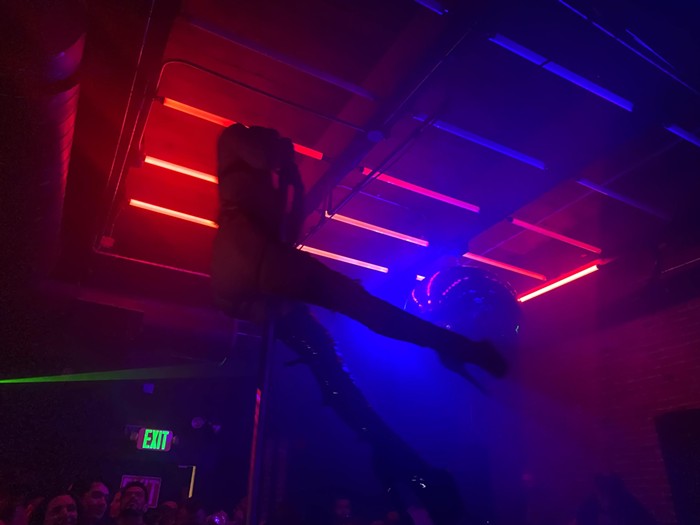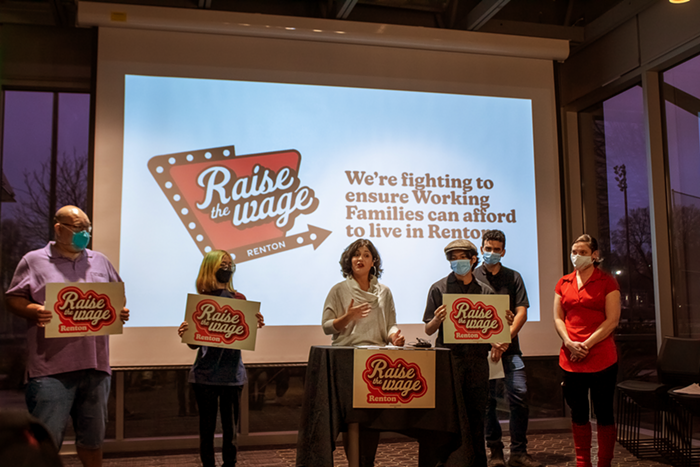You'd think that a Washington task force called "Use of Deadly Force in Community Policing Joint Legislative Task Force" would be discussing the use of deadly force by police.
But that's not what's been happening since the task force was formed in April by the state legislature. Instead, in the seven hours of discussion spread across two meetings so far, Washington State's law on police killings has not been on the task force's agenda once.
In a statement to The Stranger, Governor Jay Inslee said he's "disappointed" the task force has not yet taken up the issue. And at the last meeting, in Burien, Snohomish County prosecutor Mark Roe described the unaddressed law on police killings as "the elephant in the room."
What's happened is all too common: A life-and-death problem comes before state lawmakers in Olympia. It's a problem with controversial solutions. Lawmakers, seeing this, duck. They create a study committee and tell it to report back a year from now.
Back in January, Representative Luis Moscoso, a Democrat from Mountlake Terrace, tried in to change Washington State's law on police killings. The current statute is one of the most restrictive laws on police killings in the country, making it virtually impossible to bring charges, let alone convict, police who unjustly kill civilians.
Moscoso's bill, inspired by a 2015 police shooting of two unarmed black teenagers in Olympia, failed to make it out of the Public Safety Committee in the Democrat-controlled house in February. But that same committee—and, ultimately, the full house and senate—did pass a bill creating a task force to study Washington's police shooting law.
That task force is now coming under fire from its own members, who say the group is studiously avoiding any serious discussion of the very law it was created to address.
At a July 26 meeting, the committee once again ignored the requests, issuing an agenda that only contained presentations from police officers and prosecutors about their training and practices.
About two hours in, as Senator Kirk Pearson (R-Monroe) read off the name of the next presenter, frustrations boiled over.
"Mister chair, is there a reason on this agenda that we are not addressing... the Washington State law on deadly force?" asked Toshiko Hasegawa, who represents the Commission on Asian Pacific American Affairs. "If we're not, it seems like we're not necessarily meeting the charge of the task force... We're charged with having that difficult conversation."
Some members shifted uncomfortably in their chairs. Lisa Daugaard, head of the Public Defender Association, echoed Hasegawa's concerns.
That issue, Senator Pearson responded flatly, is "beyond what this committee was designed to do."
This is not true.
The current law requires prosecutors prove an officer acted with "malice," or evil intent, when using deadly force. In court, it's a nearly impossible standard to meet.
There have been 213 killings by Washington police officers over the past decade, according to a Seattle Times analysis. But only one officer has ever faced charges, and zero have been convicted, even in cases that sparked widespread outrage and involved officers who were fired from their departments. Black Lives Matter activists and human rights groups, including Amnesty International, have called for the elimination of the "malice" clause, saying it effectively shields police from justice.
The task force charged with studying this law is led by cochairs Pearson and Representative Roger Goodman (D-Kirkland). In the bill that passed the house and senate—with near unanimity—language directs the committee to "review laws, practices, and training programs regarding the use of deadly force in Washington State." But so far, Pearson and Goodman have not seen fit to bring up the deadly force law for consideration.
"Let's get it out there, so we're not talking around it," Roe said, throwing his hands up at the task force's second meeting, in July.
Andre Taylor, whose brother was killed by Seattle police in February, sat in on both that meeting and an earlier meeting in Olympia. His nonprofit, Not This Time, is gathering signatures for Initiative 873, backed by Seattle mayor Ed Murray, which would remove the "malice" language and go even further, striking additional so-called "state of mind" language from the law. Taylor's group is gathering signatures to get the initiative onto the ballot in 2017 (provided the legislature doesn't change the law next session).
"I didn't see a lot of leadership," Taylor said of the task force meetings so far. "I saw a lot of posturing."
Though the task force leadership is provided support staff and reimbursement for travel expense, none of the meetings have taken place in cities—such as Seattle or Pasco—where high-profile police killings have galvanized activism and calls for reform. And although there is no limit to the number of meetings the task force can hold, according to the current schedule, only two meetings remain before the committee will consider its work done. That's the bare minimum number of meetings required to meet the task force's charter.
Ahead of the July meeting, twelve task force members—members who are not lawmakers, and who are on the committee to represent people of color, immigrants, the disabled, and public defenders—wrote a letter to the cochairs requesting that they clarify the committee's rules. For example, would the group's recommendations be determined by majority vote or consensus? Their other ask: Put the deadly force law on the upcoming agenda, and also circulate the memos from prosecutors who declined to charge police officers in the 2010 shooting of Seattle woodcarver John T. Williams by a Seattle police officer and the February 2015 shooting of Pasco farmworker Antonio Zambrano-Montes by that city's officers.
The cochairs responded with a boilerplate letter thanking them for the input and didn't respond directly to any of the specific asks.
Again, the law that created the task force says it "shall review laws, practices, and training programs regarding the use of deadly force in Washington State." A bill report from legislative staff said the task force "must" review said laws—namely, the state's deadly force statute, RCW 9A.16.040, which is titled, "Justifiable homicide or use of deadly force by public officer, peace officer, person aiding."
"We're not addressing the very piece of legislation that we wanted to talk about," said Fé Lopez, representing the immigrant-rights group OneAmerica. "This agenda seems very, very one-sided. If we have two more meetings, then when are we going to address the very issue for why we are here?"
Pearson, his face reddening, replied: "You don't change the rules after we put this in place and want to add all these other things that is beyond the scope of this committee."
"That is not beyond the scope of this committee!" Hasegawa interjected. She began quoting from the law that created the task force, as Pearson held up his hand and tried to speak over her.
That's when Roe, the Snohomish County prosecutor—and the only prosecutor in the state to attempt to charge an officer with murder in the last decade—called the law the "elephant in the room." He said he was eager to have a frank discussion about it.
"No matter how dirty or ugly it gets," he said, "we should just do that."
The task force's third meeting is scheduled for September 13, at 8 a.m. on the Capitol campus in Olympia. Pearson, who walked out of the last meeting early, told me on his way out he was "not sure" if the task force would ever discuss the state law on deadly force. And neither Pearson nor Goodman has outlined the procedure for settling on recommendations after what would surely be a contentious discussion.
Michael Sargent, a lobbyist for the Washington State Fraternal Order of Police, told me in the hallway that his organization—representing about 2,800 officers at departments around the state—opposes changing the law. "There should be better education about why the law exists," he said.
In an attempt to educate me about the realities of police work, Sargent defended the conduct of the cops who killed Michael Brown, Freddie Gray, John T. Williams, and Philando Castile, citing "extenuating circumstances" and the fact that none of the officers have been convicted. When I questioned the circumstances surrounding Williams's death, he accused me of "Monday morning quarterbacking."
His organization opposed HB 2908, the law that created the task force to begin with. The Fraternal Order also opposed a companion bill to collect more data on fatal shootings by police.
Still, by the end of the July 26 task force meeting, its Democratic cochair, Representative Roger Goodman, promised that the law would be on the agenda at the next meeting. "I can guarantee, as the chair of the next meeting, we will be considering, in-depth, the use-of-force statute," he said.
It's about time, since the committee was supposed to be discussing the statute already, only has two scheduled meetings left to go, and is supposed to issue a report to the governor by December 1.
"The reason it made it on to the agenda is because the community voices forced it onto there," Hasegawa told me afterward. She argues that changing Washington's law on police killings to bring it in line with international human rights standards and community expectations will "make law enforcement look better and stronger."
US Representative Adam Smith (D-9), a former state senator who focused on criminal justice issues, has been following the work of the task force so far. "This legislative commission has a very important job to do," Smith said.
The South Seattle lawmaker has endorsed Initiative 873, hopes it gets the necessary 250,000 signatures, and believes it can become a check on the task force members "if they mess up."
Smith said the task force's job does, in fact, include examining the deadly force statute—as well as institutional racism in law enforcement. "They have a couple more meetings," Smith said. "I remain optimistic that they will."



















